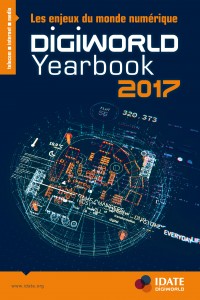Today, The still high price of connected devices, the technological fragmentation, concerns about privacy and personal data ownership, a lack of consumers and still unclear business models are all real obstacles to be overcome.
Certain products have become legion with consumers, chiefly those devoted to managing energy consumption and security (connected light bulbs, thermostats and surveillance cameras). Indeed, Consumers today are willing to invest in solutions that enable them to reduce their energy bill and/or bring them peace of mind at home. While security and energy management are the two main drivers of the market’s development, there is no dedicated regulation for connected solutions. Whereas other products are viewed more as gadgets, such as connected fridges and stoves, which the price is over-expensive, for the most part, as compared to non-connected products with similar primary features.
More and more players, more and more partnerships
The smart home and smart building ecosystem is vast and populated by a multitude of players from a wide variety of industries. In it we find CE manufacturers initially present on the market, appliance makers, home automation, lighting and security companies. Other players came on the market with smart home “pure players”, smart device specialists, as well as telcos that have already launched initiatives in this sector, capitalising on the IP boxes installed in customers’ homes. The Internet giants have also entered the fray, guns blazing.
L’écosystème du smart home et smart building est vaste et se caractérise par la présence d’une multitude d’acteurs provenant d’industries différentes. Initialement étaient présents les fabricants d’électronique grand public, d’électroménager, de domotique, d’éclairage et de sécurité. D’autres acteurs sont arrivés sur le marché avec les « pure players » du smart home, mais aussi avec les opérateurs télécoms , des fournisseurs d’énergies ou encore des compagnies d’assurance profitant de leur position privilégiée dans la maison. Les géants de l’Internet sont également présents avec une approche agressive.
In this very broad ecosystem, we note the development of numerous initiatives enabling the whole to be interoperable – in terms of variety of connected products and product manufacturers. Typically, many technological partnerships have been concluded between the various actors. Commercial agreements have also been put in place, in particular with the building and DIY players.
Voice-controlled personal assistants to provide more interoperability
Internet giants – Amazon, Google, Apple – began by introducing the smart home market via connected speakers capable of controlling different objects in the house. But these actors are mainly imposed by their voice-activated personal assistants as standard to connect all the objects of the smart home. Indeed, while the industry is looking at issues of interoperability between different systems, within a few months ecosystems have emerged with the integration of Alexa of Amazon and Google Assistant in the objects.

This article is an extract from the 2017 edition of DigiWorld Yearbook
 What is the DigiWorld Yearbook?
What is the DigiWorld Yearbook?
A round-up of the finest analysis from IDATE DigiWorld experts who track global telecom, internet and media market developments year-round.
The DigiWorld Yearbook is published in English and French, and is available in print and PDF versions.
This edition will be available on the 6th of June: Print: €100 excl. VAT – PDF: €65 excl. VAT
To delve deeper on this theme
Check out our last report
More infoRegister to DigiWorld Future, the great debate about digital economy
En savoir plusDigiWorld Future 2016 Best-of

